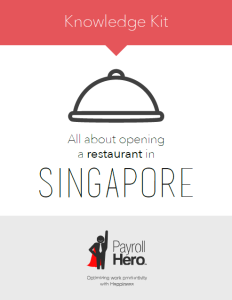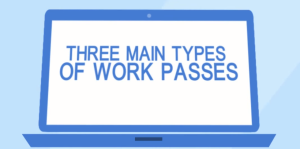The PayrollHero blog aims to be the knowledge repository for any restaurant owner or retailer in Southeast Asia. We have built our database with things you need to know while doing business in Singapore.
With that in mind, we have been working on a little project. Presenting the PayrollHero Knowledge Kit!
Download now… Free!
This starter kit was put together to give you high level information about Singapore, share some thoughts from restaurant owners, and present relevant statistics from our market research.
The information here includes research that will help you open a restaurant in Singapore or expand into the country.
- We talk about what CPF contributions are with information about the different Ethnic Funds that require contributions.The pages are linked to relevant tax forms and websites that offer more detailed information if you want it.
- There is an industry overview and analysis on the latest consumption trends in the country. We give you a salary table to refer to for your Human Resources (HR) team in Singapore.
- We also give you practical write-ups on how to get an import license, food hygiene requirements and the best internet service provider for your restaurants.
But we don’t want to give you simple hard facts that you could just Google anyway. The Knowledge Kit has a wealth of information in the form of personal stories and experiences in these countries. We interviewed the president of SaladStop!, Mr. Adrien Desbaillets. He gave advice on how he chooses locations in Singapore among other practical nuggets of information. We see it as a way to help the community because there is no better way to learn than from people who have gone through the same roadblocks as your are facing right now.
We hope this information is useful to you. We would love to hear back from you with what you think about the Knowledge Kit, how we can make things better and how you use this Kit for your own research into the restaurant industry.
Lastly, we are releasing more of these for the retail industry. Watch out for more information about these industries and countries. We have also created a Knowledge Kit for the Philippines.
So go ahead and click on the image above to access the Knowledge Kit. Let us know what you think. And good luck with your new business!




 It is important to note that Singapore companies are required to pay Foreign Worker Levy (FWL) for the Work Pass and S Pass holders. This levy is imposed by the Singapore Government to regulate foreign workers numbers in the country.
It is important to note that Singapore companies are required to pay Foreign Worker Levy (FWL) for the Work Pass and S Pass holders. This levy is imposed by the Singapore Government to regulate foreign workers numbers in the country.